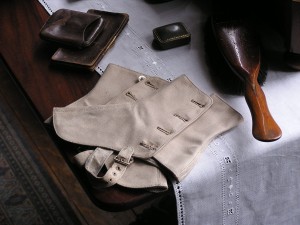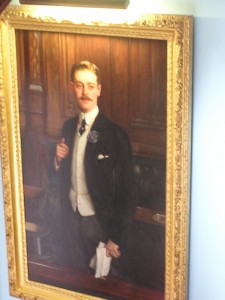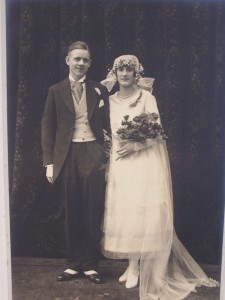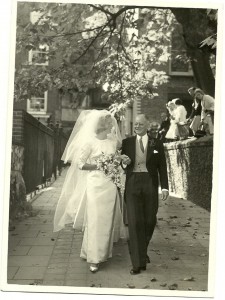Leafing through a recent edition of Hello Magazine (19 May 2014), I was struck by a picture of Johnny Depp, the distinguished tragedian, attending the ‘Met Ball’ in New York in white tie and tails, with white gloves, watch-chain, a silver-topped cane and spats. It was the spats that most intrigued me, as they are so seldom worn these days.
The other day, I went into a shop in Bloomsbury that specialised in vintage-style clothing. It was crammed with three-piece Harris Tweed suits, boaters and panamas, woollen ties and braces. There was a Penny Farthing parked outside. Yet the nattily-dressed assistant had never heard of spats.
Allow me to put him straight. Spats, short for ‘spatterdashes’, originated as military garments, and are still worn by pipers in the British army. In the late-nineteenth and early-twentieth centuries, however, they were much in vogue, both in America and Europe, as stylish civilian wear for gentlemen:
Have you seen the well-to-do
Up and down Park Avenue
On that famous thoroughfare
With their noses in the air
High hats and arrowed collars
Wide spats and lots of dollars
Spending every dime
For a wonderful time
[Irving Berlin, Puttin’ on the Ritz, 1930]
Spats were made of white cloth or brown felt that buttoned round the ankle, their ostensible purpose being to keep the mud off one’s shoes and socks. A notable spat-wearer was Tommy Agar-Robartes, reputedly the ‘best-dressed man in the House of Commons’, whose pre-Great War spats are laid out in his former bedroom at Lanhydrock, Cornwall. The prevalance of spats in that period is apparent from Sir Leslie Ward’s ‘Spy’ cartoons for Vanity Fair, such as his portrait of the magazine’s proprietor, ‘Tommy’ Bowles. I also find them mentioned in Ezra Pound’s bitter masterpiece, Hugh Selwyn Mauberly: Ode pour l’élection de son sépulchre (1920):
The sky-like limpid eyes,
The circular infant’s face,
The stiffness from spats to collar
Never relaxing into grace …
The description, apparently, is of Sir Max Beerbohm, whom Pound mistook for a Jew.
In the preface to Joy in the Morning, P.G. Wodehouse laments the passing of the spat. ‘In the brave old days spats were the hallmark of the young-feller-me-lad-about-town, the foundation stone on which his whole policy was based, and it is sad to reflect that a generation has arisen which does not know what spats were. I once wrote a book called Young Men in Spats. I could not use that title today.’
Their principal purpose, he continues, was not to ‘protect the socks from getting dashed with spatter’, but to lend ‘a sort of gay diablerie to the wearer’s appearance. The monocle might or might not be worn according to taste, but spats, like the tightly-rolled umbrella, were obligatory.’ Despite an inhibiting ‘anaemia of the exchequer’, Wodehouse had his own pair, ‘white and gleaming, fascinating the passers-by and causing seedy strangers who hoped for largesse to address me as “Captain” and sometimes even as “M’lord”. Many a butler at the turn of the century, opening the door to me and wincing visibly at the sight of my topper, would lower his eyes, see the spats and give a little sigh of relief, as much as to say, “Not quite what we are accustomed to at the northern end, perhaps, but unexceptionable to the south”.’
In Right Ho, Jeeves (Chapter 4), it is not necessary to be ‘some terrific nib’ to give away the prizes at Market Snodsbury Grammar School; ’anybody in spats’ will do, as Bertie Wooster discovers to his cost.
My own grandfather wore spats at his London wedding in 1930. (As he was about to set off on the train to his honeymoon in Eastbourne, his thoughtful batman brought the evening paper to his carriage.) The same morning suit was still in service when he gave away his daughter in 1964, and now is occasionally worn by my brother. Regrettably, the spats have been discarded and have fallen into general desuetude since the Second World War. I myself have been to a single wedding at which they were worn – that of A.A. Gill in 1989, who sported a fine pair, the best-man commenting on his ‘lifelong addiction to the “dressing-up box’.



